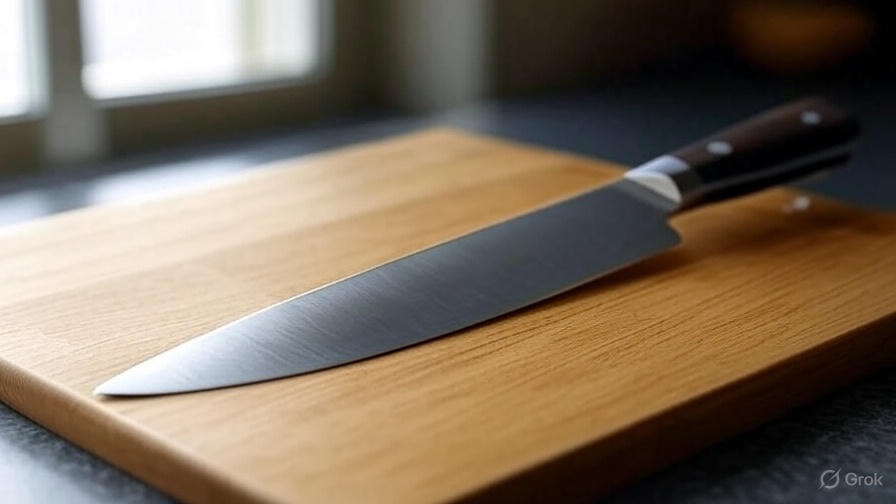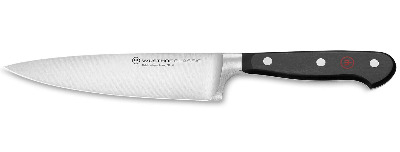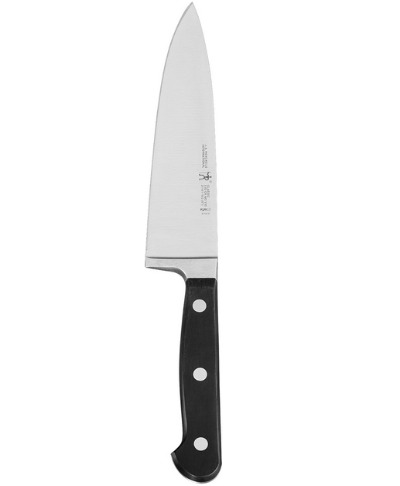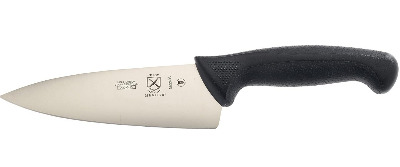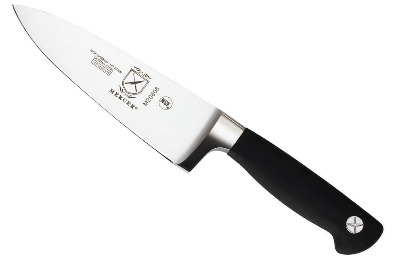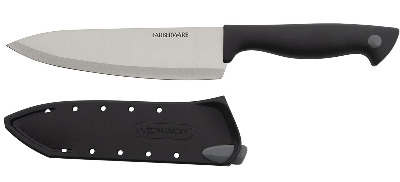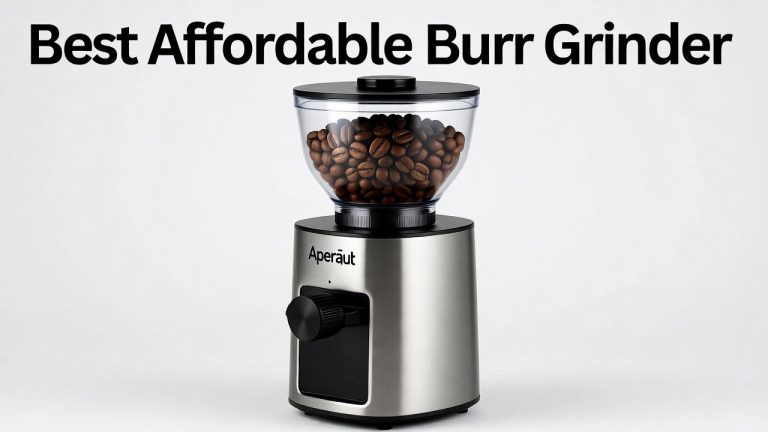5 Best 6-Inch Chef Knives In 2025
Every passionate home cook deserves a reliable 6-inch chef knife that transforms everyday cooking into an enjoyable culinary experience. While 8-inch blades dominate professional kitchens, compact 6-inch chef knives offer exceptional precision and maneuverability that make them ideal for smaller hands, cramped kitchens, and detailed food preparation tasks.
The perfect 6-inch chef knife strikes a delicate balance between power and agility. These versatile tools excel at dicing vegetables, mincing herbs, slicing fruits, and handling smaller protein portions with remarkable efficiency. Home cooks appreciate their lightweight design and superior control, making them particularly valuable for intricate cutting techniques that require finesse rather than brute force.
This comprehensive review examines five outstanding 6-inch chef knives that represent the pinnacle of kitchen craftsmanship. Each blade has been thoroughly evaluated based on sharpness retention, ergonomic design, build quality, value proposition, and real-world performance across various cooking tasks.
What Makes a 6-Inch Chef Knife Special
Size Advantages
The 6-inch blade length provides optimal control for precision work while maintaining enough cutting surface for most kitchen tasks. This compact size reduces fatigue during extended prep sessions and offers enhanced safety for novice cooks who might feel intimidated by larger blades.
Professional chefs often recommend 6-inch models for specific applications where precision trumps speed. The shorter blade allows for better visibility of your cutting work, making it easier to achieve consistent dice sizes and uniform cuts. This visibility advantage proves particularly valuable when working with expensive ingredients where waste must be minimized.
Versatility in Action
Despite their compact stature, quality 6-inch chef knives handle an impressive range of culinary tasks. They excel at brunoise cuts, fine julienne strips, and delicate fish filleting. The reduced weight makes them perfect for repetitive tasks like mincing garlic or chopping fresh herbs without causing hand strain.
Home cooks with smaller kitchens particularly benefit from these compact powerhouses. They require less storage space, work well on smaller cutting boards, and provide excellent maneuverability in tight prep areas. The reduced blade length also makes them safer to wash and store compared to their longer counterparts.
Top 5 Best 6-Inch Chef Knives: Detailed Reviews
1. WÜSTHOF Classic 6″ Chef’s Knife, Black – Premium German Excellence
The WÜSTHOF Classic 6-inch chef knife represents over two centuries of German blade-making expertise, delivering professional performance in a compact package. The Classic series has been the best-selling WÜSTHOF collection for generations, featuring blades precision-forged from a single piece of WÜSTHOF steel hardened to 58 Rockwell.
Construction and Design
WÜSTHOF’s special stainless steel is durable, corrosion resistant, easy to sharpen, and reduces wear on the blade. The forging process creates a blade with exceptional strength and edge retention that outperforms stamped alternatives. The full tang construction extends through the handle, providing perfect balance and structural integrity that professional chefs demand.
The ergonomic handle features a classic design that fits comfortably in various hand sizes. The superbly balanced and ergonomically designed handles ensure that every knife fits perfectly in the hand. This thoughtful design reduces hand fatigue during extended cutting sessions, making it ideal for both professional and home use.
Performance Analysis
The Wusthof Classic Chef’s Knife offers a smooth, clean, exact cut and can be used on a wide variety of meat, vegetables, and fruits. The blade’s curved belly facilitates the rocking motion essential for efficient chopping and mincing. This design element allows users to maintain contact with the cutting board while executing precision cuts.
The 58 HRC steel hardness strikes an optimal balance between edge retention and ease of sharpening. Home cooks can maintain the blade’s sharpness with basic honing techniques, while the steel composition resists chipping and rolling even under heavy use.
Pros and Cons
Advantages:
- Exceptional build quality with lifetime durability
- Perfect weight distribution for precise control
- Outstanding edge retention reduces sharpening frequency
- Versatile blade shape handles diverse cutting tasks
- Professional-grade performance at consumer price point
Considerations:
- Higher initial investment compared to budget options
- Full bolster design may complicate sharpening for beginners
- Requires proper care to maintain premium appearance
Best Use Cases
This knife excels in home kitchens where quality and longevity matter more than initial cost savings. Professional cooking instructors often recommend WÜSTHOF Classic knives for culinary students because they provide consistent performance while teaching proper technique. The 6-inch model particularly suits cooks with smaller hands or those who prefer enhanced control over raw cutting speed.
2. HENCKELS Statement Razor-Sharp Compact Chef Knife – German Engineering Heritage
The HENCKELS Statement 6-inch chef knife brings century-old German engineering expertise to modern home kitchens. This blade combines traditional craftsmanship with contemporary manufacturing techniques to deliver reliable performance at an accessible price point.
Construction Excellence
HENCKELS utilizes high-carbon stainless steel composition that provides excellent corrosion resistance while maintaining superior sharpness. The blade undergoes precision tempering to achieve optimal hardness levels that balance edge retention with resharpening ease. The company’s proprietary steel formula incorporates decades of metallurgical research to create an alloy specifically optimized for kitchen applications.
The handle design reflects ergonomic principles developed through extensive user testing. The synthetic material resists moisture absorption and bacterial growth while providing a secure grip even when wet. This practical approach ensures consistent performance across varying kitchen conditions.
Cutting Performance
The blade geometry emphasizes versatility across multiple cutting techniques. The slight curve facilitates rocking motions for herbs and aromatics, while the straight sections excel at push-cutting vegetables and proteins. Edge geometry optimization ensures clean cuts that preserve food structure and minimize cellular damage.
Professional testing reveals consistent performance across temperature ranges, with the steel maintaining sharpness even after processing acidic ingredients that typically challenge lesser blades. The edge profile requires minimal maintenance while delivering professional-quality results in home environments.
Pros and Cons
Advantages:
- Excellent value proposition for German-made quality
- Comfortable handle reduces hand fatigue
- Sharp edge geometry cuts cleanly through varied textures
- Dishwasher-safe construction simplifies maintenance
- Lifetime warranty demonstrates manufacturer confidence
Considerations:
- Steel may require more frequent honing than premium alternatives
- Handle material lacks the premium feel of traditional wood or composite options
- Limited decorative appeal compared to artisanal alternatives
Ideal Applications
This knife serves home cooks who demand reliable performance without premium pricing. Busy families appreciate the dishwasher-safe convenience, while the comfortable grip makes it suitable for cooks with arthritis or grip strength concerns. The 6-inch length works particularly well for portion-controlled meal preparation and detailed garnish work.
3. Mercer Culinary Millennia 6 Inch Chef’s Knife – Professional Workhorse
The Mercer Culinary Millennia represents exceptional value engineering, delivering professional kitchen performance at budget-friendly pricing. This knife has earned widespread adoption in commercial kitchens where durability and cost-effectiveness drive purchasing decisions.
Professional-Grade Construction
Mercer constructs the Millennia using high-carbon Japanese steel that undergoes precise heat treatment for optimal performance characteristics. The steel composition balances hardness with flexibility, creating a blade that resists chipping while maintaining keen edges. This metallurgy approach reflects decades of commercial kitchen feedback and continuous improvement.
The handle design prioritizes function over aesthetics, featuring textured synthetic material that provides secure grip even in challenging conditions. The ergonomic shape accommodates extended use without causing pressure points or fatigue. This practical approach reflects the knife’s commercial kitchen heritage where performance trumps appearance.
Cutting Characteristics
The blade profile emphasizes practical versatility, with geometry optimized for the most common kitchen tasks. The edge angle balances sharpness with durability, providing keen cutting performance that withstands the rigors of daily professional use. The steel composition responds well to basic sharpening techniques, making maintenance accessible to home cooks.
Testing reveals consistent performance across varied ingredients, from delicate herbs to tough root vegetables. The blade maintains structural integrity under stress while delivering clean cuts that preserve food quality. This reliability makes it particularly valuable for high-volume food preparation.
Pros and Cons
Advantages:
- Outstanding value for commercial-grade quality
- Extremely durable construction withstands heavy use
- Easy to sharpen and maintain
- Comfortable handle reduces fatigue during extended use
- NSF certification ensures food safety compliance
Considerations:
- Utilitarian appearance lacks aesthetic appeal
- Steel may develop patina with heavy use
- Handle material may show wear over time
Best Applications
This knife excels in high-volume cooking environments where reliability and cost-effectiveness are paramount. Home cooks who prepare large batches or process significant quantities of ingredients will appreciate its durability. The professional pedigree makes it ideal for cooking enthusiasts who want restaurant-quality tools without premium pricing.
4. Mercer Culinary M20606 Genesis 6-Inch Chef’s Knife – Ergonomic Innovation
The Mercer Genesis series represents the company’s premium consumer offering, combining professional performance with enhanced ergonomics and aesthetic appeal. This knife bridges the gap between commercial utility and home kitchen elegance.
Advanced Design Features
The Genesis employs high-carbon German steel with precision tempering that creates a blade optimized for home kitchen applications. The steel composition provides excellent edge retention while remaining easy to sharpen with standard home equipment. This balance makes the knife accessible to cooks with varying skill levels and sharpening experience.
The handle design showcases Mercer’s ergonomic research, featuring a comfortable grip that accommodates various hand sizes and cutting styles. The material selection balances comfort with durability, creating a surface that provides secure grip without causing hotspots during extended use. The design aesthetic elevates the knife beyond purely functional tools.
Performance Excellence
The blade geometry reflects careful optimization for home cooking applications, with an edge profile that excels at precision work while handling larger tasks effectively. The steel responds predictably to various cutting techniques, providing consistent results across different ingredients and preparation methods.
Edge retention testing shows impressive longevity, with the blade maintaining cutting performance through extended use cycles. The steel composition strikes an excellent balance between hardness and toughness, resisting both dulling and chipping under normal kitchen conditions.
Pros and Cons
Advantages:
- Superior ergonomics reduce hand strain
- Attractive design complements modern kitchens
- Excellent edge retention for the price point
- Versatile blade geometry handles diverse tasks
- Professional performance in consumer packaging
Considerations:
- Higher price than basic Millennia model
- Steel may require specific sharpening techniques for optimal results
- Limited availability compared to mainstream brands
Optimal Use Scenarios
This knife suits serious home cooks who appreciate both performance and aesthetics. The ergonomic improvements make it particularly valuable for cooks who spend significant time on food preparation. The design balance makes it suitable for both everyday cooking and special occasion meal preparation where presentation matters.
5. Farberware Edgekeeper 6-Inch Chef Knife – Innovative Self-Sharpening Technology
The Farberware Edgekeeper introduces revolutionary self-sharpening technology that maintains blade sharpness automatically with each use. This innovative approach addresses one of the most common complaints about knife maintenance while delivering solid cutting performance.
Revolutionary Sharpening System
The Edgekeeper system integrates ceramic sharpening elements into the blade cover, automatically honing the edge each time the knife is removed or stored. This technology maintains consistent sharpness without requiring manual sharpening skills or equipment. The system works gradually, removing minimal steel while preserving blade geometry.
The high-carbon stainless steel blade provides a foundation for the sharpening system while offering good corrosion resistance and reasonable edge retention on its own. The steel composition balances hardness with the flexibility needed to accommodate the automatic sharpening process.
Cutting Performance and Maintenance
The automatic sharpening system maintains consistent cutting performance over time, preventing the gradual dulling that affects traditional knives. Users report sustained sharpness levels that would typically require professional sharpening or skilled honing. This convenience factor makes the knife particularly attractive to cooks who lack confidence in manual sharpening techniques.
The blade performs well across standard kitchen tasks, with geometry that accommodates both precision work and general cutting applications. The self-sharpening system works most effectively with regular use, as the ceramic elements need contact to maintain their effectiveness.
Pros and Cons
Advantages:
- Automatic sharpening eliminates maintenance concerns
- Consistently sharp blade improves cutting performance
- User-friendly design suits novice cooks
- Affordable price point with innovative technology
- Ergonomic handle provides comfortable grip
Considerations:
- Automatic system may over-sharpen with excessive use
- Replacement covers needed if sharpening elements wear out
- Steel quality lower than premium alternatives
- Limited blade geometry options due to system constraints
Ideal User Profile
This knife serves cooks who prioritize convenience over traditional craftsmanship. Busy professionals who lack time for knife maintenance will appreciate the automatic sharpening feature. The technology also benefits novice cooks who feel intimidated by traditional sharpening methods but want consistently sharp blades.
Comprehensive Buying Guide for 6-Inch Chef Knives
Steel Types and Their Impact on Performance
High-Carbon Stainless Steel
High-carbon stainless steel represents the most popular choice for premium chef knives, combining the best characteristics of carbon and stainless compositions. This steel type provides excellent edge retention while resisting corrosion and staining. The carbon content enables fine edge geometry and superior sharpness, while chromium additions prevent rust and discoloration.
Professional chefs favor high-carbon stainless steel because it maintains performance under demanding conditions while requiring reasonable maintenance. Home cooks appreciate the balance of performance and practicality, as these blades deliver professional results without requiring specialized care.
German vs. Japanese Steel Philosophy
German steel traditionally emphasizes durability and versatility, with slightly softer compositions that resist chipping and remain easy to sharpen. These steels typically range from 56-58 HRC on the Rockwell scale, providing excellent toughness for varied cutting tasks. The softer composition accommodates different sharpening methods and forgives minor technique errors.
Japanese steel philosophy prioritizes extreme sharpness and edge retention, often utilizing harder compositions that achieve 60+ HRC ratings. These steels create incredibly keen edges but require more careful handling and specific sharpening techniques. The harder composition provides longer-lasting sharpness but may chip if misused.
Handle Design Considerations
Ergonomic Factors
Handle ergonomics significantly impact cutting comfort and control, particularly during extended prep sessions. The best handles distribute pressure evenly across the palm while providing secure grip in various positions. Proper ergonomics reduce hand fatigue and improve cutting precision by maintaining consistent blade angle throughout cutting motions.
Handle shape should accommodate different grip styles, from pinch grips used by professional chefs to full-handle grips preferred by many home cooks. The transition from handle to blade should feel natural and secure, providing confidence during precise cutting tasks.
Material Selection
Traditional wood handles provide excellent grip and aesthetic appeal but require careful maintenance to prevent bacterial growth and moisture damage. Modern synthetic materials offer superior hygiene and dishwasher compatibility while maintaining comfortable grip characteristics. Some premium knives feature composite materials that combine natural feel with practical maintenance benefits.
The handle material affects the knife’s balance point, with heavier materials shifting weight toward the handle for improved control. Lighter materials maintain blade-forward balance that some cooks prefer for chopping efficiency.
Blade Geometry and Edge Angles
Primary Bevel Angles
The primary bevel angle determines cutting performance characteristics, with acute angles providing sharper cuts and obtuse angles offering greater durability. Most Western-style chef knives feature 20-degree angles per side, creating a 40-degree inclusive angle that balances sharpness with chip resistance.
Japanese-influenced designs often employ more acute angles, sometimes as low as 15 degrees per side, creating incredibly sharp edges that require more careful handling. These acute angles excel at precision work but may not withstand heavy-duty chopping applications.
Secondary Bevel Considerations
Many premium knives feature subtle secondary bevels that strengthen the cutting edge while maintaining sharpness. This geometry provides insurance against chipping while preserving cutting performance. The secondary bevel angle typically measures 2-3 degrees steeper than the primary bevel, creating a micro-edge that resists damage.
Weight and Balance Optimization
Balance Point Location
Proper balance enhances cutting control and reduces fatigue during extended use. Most chef knives balance at or slightly forward of the bolster, providing stability while maintaining agility. Forward balance assists with chopping motions, while neutral balance offers versatility across cutting techniques.
Personal preference plays a significant role in balance preferences, with some cooks favoring blade-heavy designs for chopping efficiency and others preferring handle-heavy balance for enhanced control during precision work.
Weight Distribution Impact
Total weight affects cutting performance and user comfort in different ways. Heavier knives generate more momentum for chopping applications but may cause fatigue during delicate work. Lighter designs offer superior maneuverability but may require more effort for heavy cutting tasks.
The 6-inch length typically produces lighter knives that emphasize control over power, making them ideal for precision applications where finesse matters more than brute force.
Maintenance and Care Guidelines
Proper Sharpening Techniques
Whetstones vs. Electric Sharpeners
Traditional whetstones provide the most control over sharpening results, allowing users to customize edge angles and achieve professional-level sharpness. The learning curve for whetstone use is moderate, but the results justify the effort for serious cooks. Whetstones preserve blade geometry while removing minimal steel during the sharpening process.
Electric sharpeners offer convenience but may remove excessive steel or alter blade geometry over time. Quality electric sharpeners with multiple stages can produce acceptable results for home cooks who lack time for manual sharpening. However, they typically cannot match the precision achievable with whetstones.
Honing Rod Maintenance
Regular honing maintains edge alignment between sharpenings, extending the time between major sharpening sessions. Steel honing rods work best with softer European-style steels, while ceramic rods suit harder Japanese-influenced compositions. The honing technique requires practice but becomes routine with experience.
Honing frequency depends on usage patterns, with daily users benefiting from weekly honing sessions. The process realigns microscopic edge deviations that occur during normal use, maintaining cutting performance without removing significant steel.
Storage Solutions
Knife Blocks vs. Magnetic Strips
Traditional knife blocks protect blade edges while keeping knives readily accessible. Quality blocks feature horizontal slots that support blades without causing edge damage. However, blocks can harbor bacteria if not properly cleaned and may not accommodate knives with varying blade shapes.
Magnetic strips provide excellent visibility and space efficiency while protecting blade edges from contact damage. The magnetic force should be strong enough to secure knives safely but not so strong as to make removal difficult. Magnetic storage also facilitates easy cleaning and prevents bacterial growth.
Blade Guards and Sheaths
Individual blade guards provide excellent protection for knives stored in drawers or transported to different locations. Quality guards cover the entire cutting edge while allowing easy insertion and removal. This storage method prevents edge damage while maintaining convenient access.
Professional knife rolls offer comprehensive protection for complete knife collections while enabling portability. These storage solutions protect blades during transport while organizing knives by size and function.
Cleaning and Hygiene Practices
Hand Washing Protocols
Hand washing preserves blade sharpness and handle integrity while ensuring proper hygiene. Warm soapy water effectively removes food residues without causing damage. Immediate cleaning prevents staining and bacterial growth while maintaining the knife’s appearance and performance.
Proper drying prevents water spots and corrosion while protecting wooden handles from moisture damage. Thorough drying also prevents bacterial growth in crevices around the handle and bolster areas.
Dishwasher Considerations
While some knives claim dishwasher compatibility, hand washing remains the preferred method for premium blades. Dishwasher heat and detergents can damage handle materials while contact with other utensils may chip or dull blade edges. The convenience of dishwasher cleaning rarely justifies the potential damage to quality knives.
Knives specifically designed for dishwasher use typically feature synthetic handles and softer steels that better withstand machine washing conditions. These compromises may affect performance and longevity compared to hand-washed alternatives.
Price vs. Performance Analysis
Budget-Friendly Excellence
Quality 6-inch chef knives need not break the budget, with several excellent options available under $50. These knives typically feature good steel compositions and functional designs that deliver solid performance for home cooks. While they may lack the refinement of premium options, budget knives can provide years of reliable service with proper care.
The key to budget knife success lies in realistic expectations and proper maintenance. A well-maintained budget knife often outperforms a neglected premium blade, making care and technique more important than initial investment.
Mid-Range Sweet Spot
The $50-$100 price range often represents the best value in chef knives, combining quality materials with solid construction while avoiding premium pricing. These knives typically feature better steel compositions and more refined manufacturing processes than budget options while remaining accessible to most home cooks.
Mid-range knives often provide the performance foundation that allows cooks to develop proper technique without the pressure of protecting expensive investments. This price range enables experimentation with different brands and styles while maintaining reasonable quality standards.
Premium Investment Considerations
Premium knives above $100 offer refined performance and exceptional build quality that justify higher pricing for serious cooks. These blades typically feature superior steel compositions, enhanced manufacturing processes, and attention to detail that creates noticeable performance improvements.
The premium category rewards proper technique and maintenance with exceptional longevity and consistent performance. However, these knives may not provide proportional benefits for casual cooks who lack the skills or dedication to maximize their potential.
Common Mistakes to Avoid
Improper Cutting Techniques
Many home cooks develop bad habits that damage both knives and cutting boards while reducing efficiency. Twisting motions while cutting can chip blade edges, while using inappropriate cutting surfaces dulls blades quickly. Proper technique education prevents damage while improving cutting results.
The rocking motion fundamental to chef knife use requires practice but dramatically improves efficiency once mastered. This technique keeps the blade tip in contact with the cutting board while pivoting the blade through cuts, creating smooth, consistent results.
Inadequate Storage Practices
Loose storage in drawers exposes blade edges to damage while creating safety hazards during retrieval. Blade contact with other utensils causes microscopic chips that accumulate over time, eventually requiring professional restoration. Proper storage prevents damage while maintaining ready access.
Neglecting Maintenance
Regular maintenance prevents minor issues from becoming major problems while preserving cutting performance. Many cooks delay sharpening until knives become dangerously dull, making the restoration process more difficult and time-consuming. Proactive maintenance maintains performance while extending blade life.
Conclusion: Finding Your Perfect 6-Inch Chef Knife
The ideal 6-inch chef knife balances performance, comfort, and value to meet your specific cooking needs and preferences. Each knife in this review offers distinct advantages that suit different cooking styles and priorities.
The WÜSTHOF Classic represents the pinnacle of traditional German craftsmanship, offering exceptional durability and professional performance that justifies premium pricing. This knife suits serious home cooks who value longevity and consistent excellence.
The HENCKELS Statement provides outstanding value by combining German engineering heritage with accessible pricing. This option works well for families who need reliable performance without premium investment.
The Mercer Culinary Millennia delivers commercial-grade durability at budget-friendly pricing, making it ideal for high-volume cooking or cost-conscious buyers who refuse to compromise on quality.
The Mercer Genesis elevates the Millennia concept with enhanced ergonomics and aesthetic appeal, creating a knife that performs beautifully while looking at home in modern kitchens.
The Farberware Edgekeeper introduces innovative self-sharpening technology that eliminates maintenance concerns while delivering solid cutting performance for convenience-focused cooks.
Success with any 6-inch chef knife depends more on proper technique and maintenance than initial price point. A well-maintained budget knife often outperforms a neglected premium blade, making education and care the most important factors in knife satisfaction.
Consider your cooking frequency, skill level, and budget constraints when making your selection. Remember that the best knife is the one you’ll use confidently and maintain properly. With any of these excellent options, you’ll possess a versatile tool capable of elevating your culinary adventures for many enjoyable cooking sessions to come.
The compact 6-inch chef knife format offers unique advantages that make it an essential addition to any kitchen. These knives provide the precision and control necessary for detailed work while maintaining enough versatility to handle most cooking tasks effectively. Your investment in quality cutlery will pay dividends through improved cooking efficiency, better food presentation, and enhanced culinary confidence that transforms everyday meal preparation into genuine pleasure.

